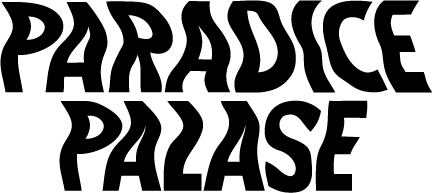Interview: Noémie Jennifer Bonnet
Noémie Jennifer Bonnet is a French-born artist based in New York. She rearranges animal bones that were discarded as industrial waste, invasive plants, and sculpted elements into organism-like objects both familiar and alienating. Born of dead fragments, reaching toward new life, the sculptures' references to the fungal, botanical, and animal worlds maintain an ambiguity anchored in the realm of the unknowable. In their fusion of gloom and whimsy, they coalesce into an ecological “danse macabre” for our era.
She has shown her work with Flux Factory, marathon gallery, and White Columns, among others, and has permanent public murals in three locations in Providence, Rhode Island. She holds an MFA from CUNY Hunter College. Her current studio is in the attic of an old house at the epicenter of an unsolved 19th century murder mystery.
Read our interview with Noémie below!
Installation view of “migrant mother” exhibited at marathon gallery, drift-bone fragments, driftwood, epoxy resin, acrylic, steel wire, 16 x 13 x 20 inches, 2023
photo credit: Shane Henken
PP: What motivates you to make art?
NJB: An artist once told me that art has saved her life over and over. As the years go by I've found myself relating to that sentiment, though the reasons for it ebb and flow. Lately I've been thinking about how grateful I am to have a practice that grounds me in the physical world. Gardening and cooking are similar in this way. All these things are about touch, care, transformation. They require a particular kind of attention. They're on their own schedule. They'll always surprise you.
divine trickster, drift-bone fragments, driftwood, European water chestnut seeds, compost, epoxy resin, acrylic, 16 x 6.25 x 4.25 inches, 2023
true believer, drift-bone fragments, epoxy, acrylic, 2024
PP: Walk us through a typical day in your studio or generally through your process to make new work.
NJB: Some days are scavenging days out of the studio, where I gather materials. If I get lucky, a single day of scavenging will last me a few months. I usually start in the studio by laying everything out. I sit and stare. I start pairing things together to see what shapes they can create. I don't sketch and actively steer clear of any overarching vision in the beginning stages. A lot of my work is trying to stay in that state of unknowing and listening to the materials. Some days I hear them loud and clear, and things come together very quickly. Other days are achingly slow and those are always a lesson in how to define productivity.
PP: Name a childhood toy (or memory/cultural reference) you had, that you think relates to your practice today.
NJB: I have no idea if this is a common trick, but when I was little, my mom organized all of my drawings into a bound book by repurposing the spine of a thick magazine. She cut out all of the magazine pages, leaving a large enough strip to glue each drawing to it. I made a front and back cover and collaged a bunch of stuff on those. It's the earliest memory I have of repurposing something, and I don't think I've ever lost that sense of excitement around material transformation—or for that matter, looking through trash and thinking about what I could do with it.
Studio view of work in progress
PP: Who or what has had the biggest impact on your creative practice?
NJB: This isn't the biggest thing, but it's a fairly recent thing. I didn't realize how wildly, profoundly critical silence is for my brain until I left NYC and started making work in the Hudson Valley a couple of years ago. My partner's job is likely going to call us back to the city, and I'm a little nervous about losing that mental space. I guess it's time to research noise-cancelling headphones.
PP: What is your process like for critiquing your own work?
NJB: Mostly this is a question of separating the kind of self-critique that can move your work forward from the death spirals of self-judgment, which will paralyze you into making nothing. I've learned that the best thing for me is to try and shut down my analytic brain until I'm done, or nearly done, with something. Any earlier and I'm in the danger zone, and it's time to go for a walk. I'll always love this letter from Sol Lewitt to Eva Hesse.
To learn more about Noémie’s work, see her Instagram and Website




